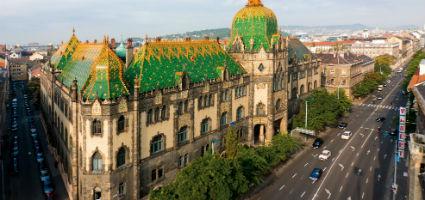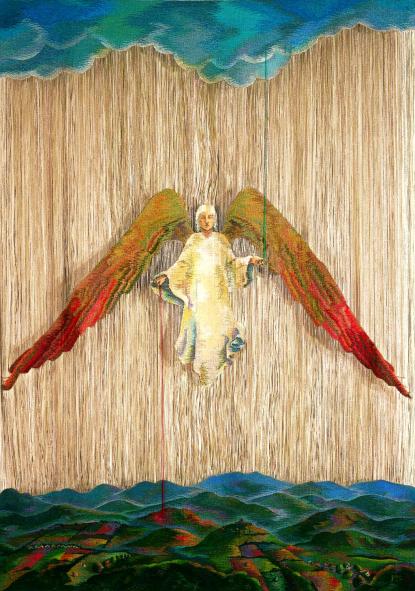2024. May 2. Thursday
Museum of Applied Arts - Budapest
 |
Address: 1091, Budapest Üllői út 33-37.
Phone number: (1) 456-5100
E-mail: info@imm.hu
Opening hours: A múzeum egész évben zárva tart.
|
The exhibition has closed for visitors.
2008.05.21. - 2008.09.14.
I. Early works
 Zsuzsa Péreli had wanted to become a painter since she was four years old and studied art in various art schools. The models for her pastels were found at the art school and among family and friends. In 1968, she met the tapestry weaver Hédi Tarján, who took it upon herself to teach Péreli to weave. Except for a few large tapestries, she weaves without using any full-size sketches.
Zsuzsa Péreli had wanted to become a painter since she was four years old and studied art in various art schools. The models for her pastels were found at the art school and among family and friends. In 1968, she met the tapestry weaver Hédi Tarján, who took it upon herself to teach Péreli to weave. Except for a few large tapestries, she weaves without using any full-size sketches.
II. Works inspired by old objects and photographs
"I was born at the Ecseri," she would explain, referring to the big flea market on the outskirts of Budapest, "but metaphorically speaking, of course." She often uses old objects as appliqués and her early tapestries were influenced by old photographs, objects or buildings.
III. Mind games
Series of tapestries showing a skating couple, or others inspired by military subjects, and tapestries on various nature-related themes are all of critical thought reflecting human relationships, but the clear photographic prototype is hardly present any more.
IV. Personal mythology
A variety of marvellous tapestries using gold and silver thread, decorated with various pieces of appliqué, knots and beaded embroidery are more sculptural tapestries reminding us that living the holiness of daily life leads to understanding of the true nature of the soul.
V. Metaphysical works
From the 1990's figures facing the viewer are replaced by figures of indefinable gender standing with their backs to us, looking intensely at something in the distance and inviting us to look out from the credible as well.
VI. Illustrations to Petőfi's Sir John
Publisher Magvető approached Zsuzsa Péreli in 2006 to illustrate János Vitéz (Sir John, 1845), a narrative poem by Hungary’s great poet Sándor Petőfi. She produced for them 17 water colours, all about the same size.
 Zsuzsa Péreli had wanted to become a painter since she was four years old and studied art in various art schools. The models for her pastels were found at the art school and among family and friends. In 1968, she met the tapestry weaver Hédi Tarján, who took it upon herself to teach Péreli to weave. Except for a few large tapestries, she weaves without using any full-size sketches.
Zsuzsa Péreli had wanted to become a painter since she was four years old and studied art in various art schools. The models for her pastels were found at the art school and among family and friends. In 1968, she met the tapestry weaver Hédi Tarján, who took it upon herself to teach Péreli to weave. Except for a few large tapestries, she weaves without using any full-size sketches.II. Works inspired by old objects and photographs
"I was born at the Ecseri," she would explain, referring to the big flea market on the outskirts of Budapest, "but metaphorically speaking, of course." She often uses old objects as appliqués and her early tapestries were influenced by old photographs, objects or buildings.
III. Mind games
Series of tapestries showing a skating couple, or others inspired by military subjects, and tapestries on various nature-related themes are all of critical thought reflecting human relationships, but the clear photographic prototype is hardly present any more.
IV. Personal mythology
A variety of marvellous tapestries using gold and silver thread, decorated with various pieces of appliqué, knots and beaded embroidery are more sculptural tapestries reminding us that living the holiness of daily life leads to understanding of the true nature of the soul.
V. Metaphysical works
From the 1990's figures facing the viewer are replaced by figures of indefinable gender standing with their backs to us, looking intensely at something in the distance and inviting us to look out from the credible as well.
VI. Illustrations to Petőfi's Sir John
Publisher Magvető approached Zsuzsa Péreli in 2006 to illustrate János Vitéz (Sir John, 1845), a narrative poem by Hungary’s great poet Sándor Petőfi. She produced for them 17 water colours, all about the same size.
